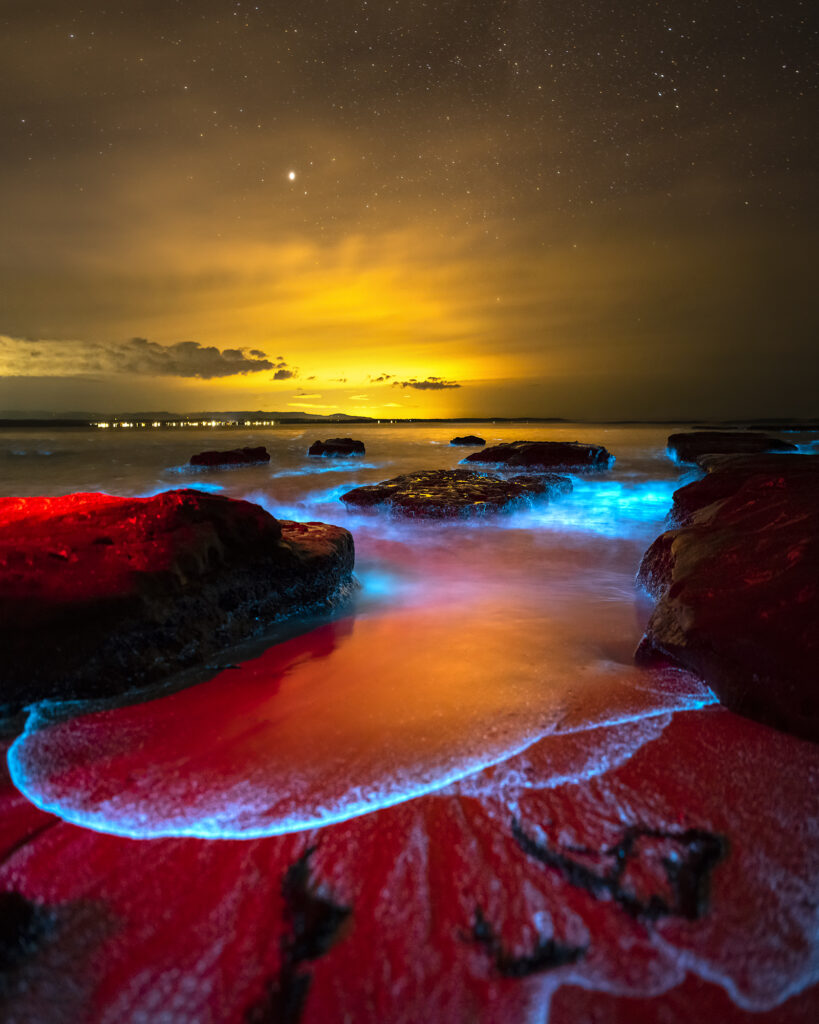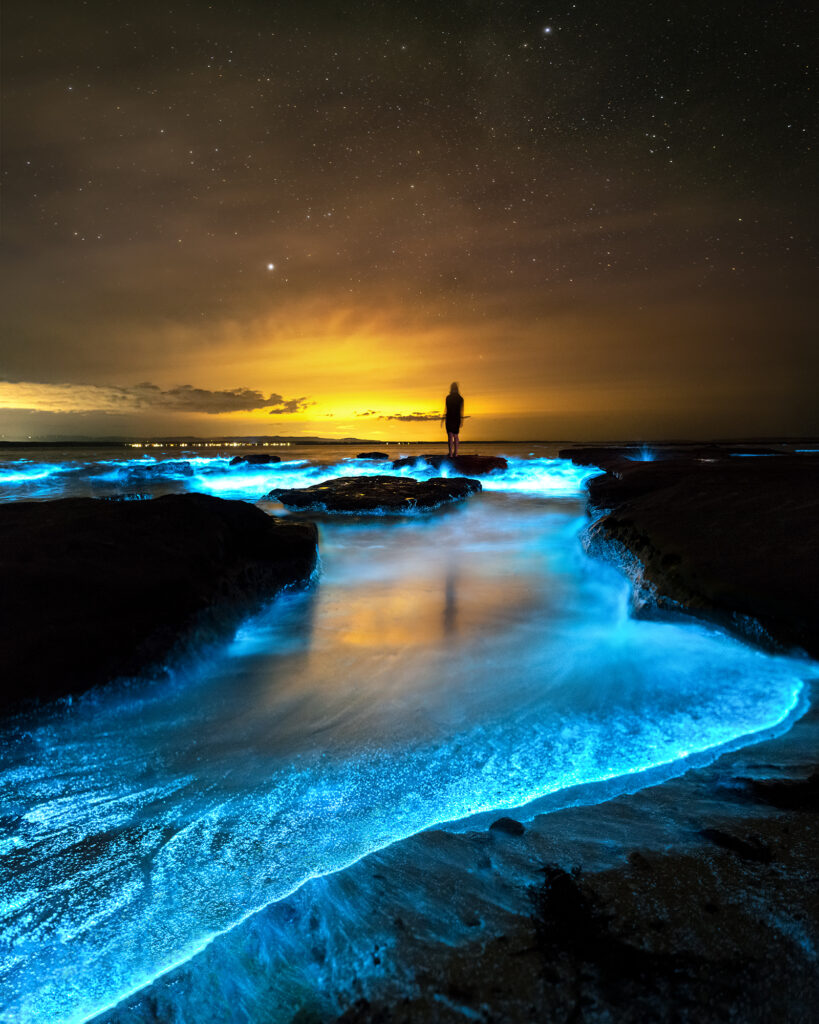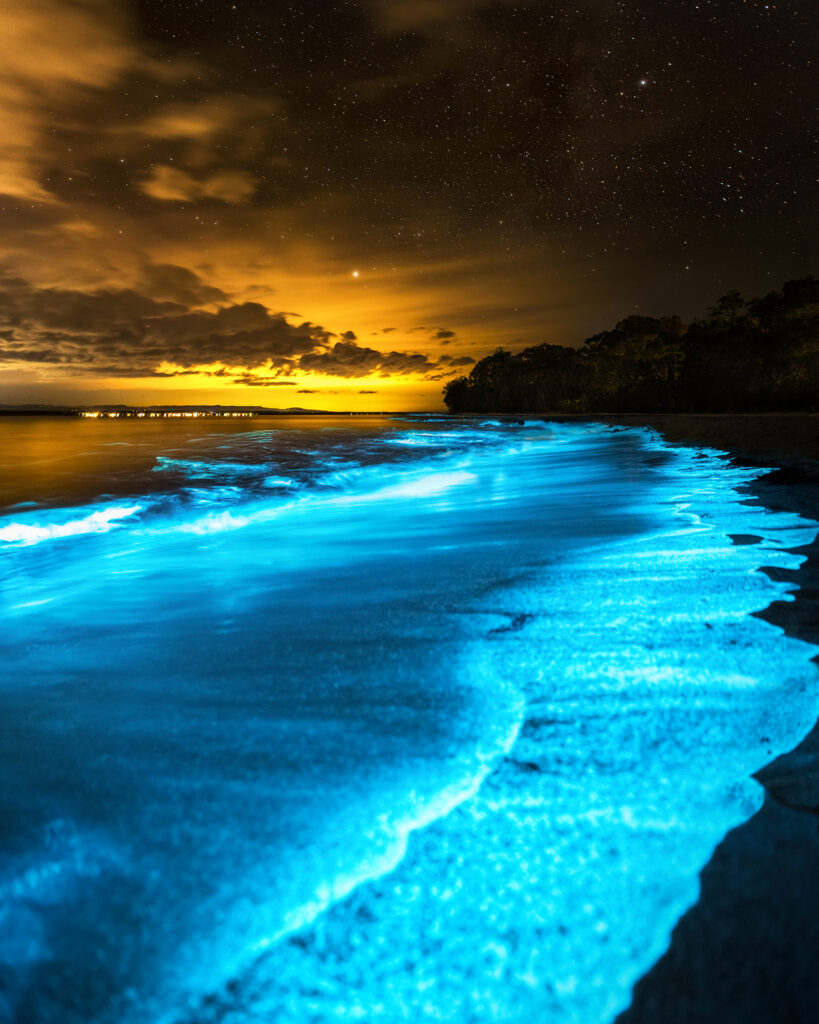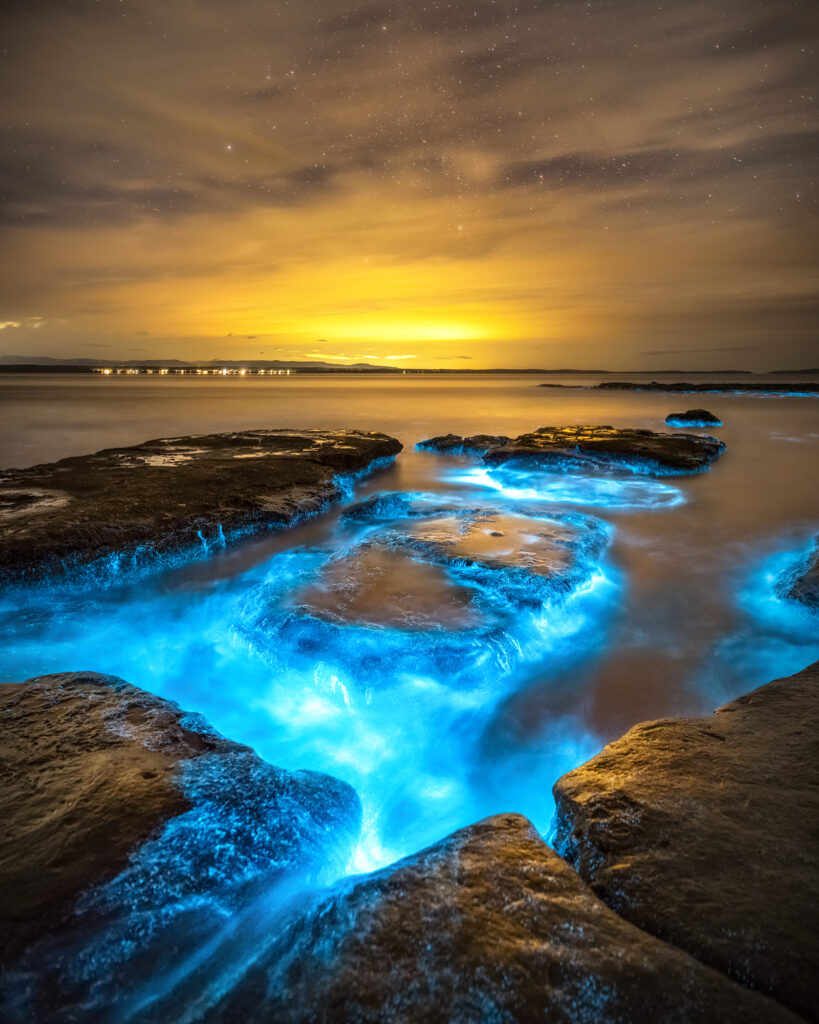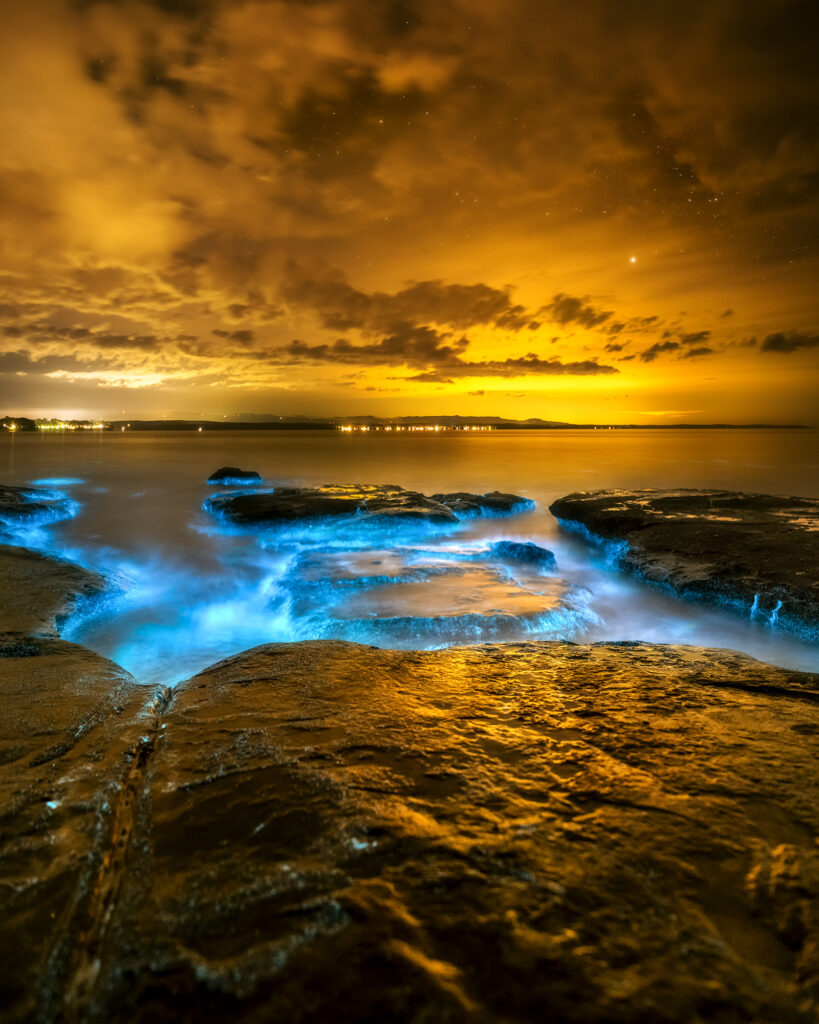Camera: Nikon D850
Lens: Nikkor 24-70mm 2.8 VR
Sky:
Aperture: f/2.8
Shutter Speed: 30 sec
ISO: 1600
Foreground:
Aperture: f/2.8
Shutter Speed: 13 sec
ISO: 5000
Bioluminescence is one of the most stunning natural light shows of our world. It is the production of light by a living organism when it is disturbed. It is a form of chemiluminescence. Bioluminescence occurs widely in marine vertebrates and invertebrates, as well as in some fungi. The most frequently encountered bioluminescent organisms are the dinoflagellates, like algae.
A rapid accumulation of certain dinoflagellates can result in a visible colouration of the water, colloquially known as Red Tide, which is seen during the day.
These concentrated algal blooms are subjected to movement by wind, which pushes them against the shoreline. These organisms have an internal body clock which means they never produce light during the daytime even if put into a dark environment. The visual spectacle happens only at night when the algae emit a bioluminescent blue glow when disturbed.
Many photographers dream about shooting this beautiful bioluminescence light show which can be a real challenge.
The most difficult thing is to find it.
The occurrence of bioluminescence is quite rare and random and it can disappear quickly with the changing wind. Also, the lifespan of the algae is relatively short — approximately 2 days.
You have the best chance to receive a real-time warning about its presence by following certain groups, like the Bioluminescence Australia Facebook Page, where people post if they see bioluminescence somewhere along the coast.
Camera: Nikon D850
Lens: Nikkor 24-70mm 2.8 VR
Sky:
Aperture: f/2.8
Shutter Speed: 30 sec
ISO: 1600
Foreground:
Aperture: f/2.8
Shutter Speed: 5 sec
ISO: 8000
On a Saturday afternoon in July 2020, a good friend of mine, Marty Pippen, a talented photographer, called me excitedly and informed me he just saw a post about bioluminescence in Jervis Bay. He asked me if I wanted to join him for a drive to find it. We had done a trip together to Jervis Bay a couple of months earlier searching for the “blue magic”. However, when we’d arrived, we found the concentration of the algae wasn’t dense enough to be seen with the naked eye.
This time, with renewed excitement, we set off at 6 pm from Sydney for the 3-hour journey. When we arrived, we checked out a couple of beaches where we found some promising signs, but it still wasn’t bright enough. So we drove to Vincentia where we found dozens of people. They were jumping and running on the beach, kicking the water which exploded in fluorescent blue colours. The waves were glowing, the sand was sparkling, and each step turned on this magical light under our feet. It was one of the most amazing things that I’ve ever seen. Walking on the beach felt like walking in the forest of Pandora from the movie Avatar.
Camera: Nikon D850
Lens: Nikkor 24-70mm 2.8 VR
Sky:
Aperture: f/2.8
Shutter Speed: 30 sec
ISO: 800
Foreground:
Aperture: f/2.8
Shutter Speed: 8 sec
ISO: 8000
To capture this fluorescent magic you need some preparation.
For high-quality images, you need a good camera, a good lens, a tripod, and preferably, a bright torch. Shooting in dark with limited light sources can be challenging for many.
Choosing the right lens is important to capture decent photos. Ideally, you want a wide-angle zoom or prime; it’s best to work in a focal range of around 14-20mm to 35mm. But this is only half the story: you also need a wide aperture for light-gathering purposes, as using too high ISO will result in noisy images. You need to use as wide aperture as you can. I recommend around f2.8. You should aim for your ISO to be between 1000-8000. You can also play with the exposure time. It can be from a couple of seconds to a couple of minutes, depending on the desired effect that you are aiming for.
With the wide aperture, you can’t get everything in focus. Therefore, you need to capture several images with different focus points and focus stacking in post-processing.
Focusing in the dark could also be challenging. I recommend using a torch to illuminate your foreground and set your focus manually.
For the sky, choose a bright celestial object or any light source in the distance and focus on that.
Once you have all the sharp images you can merge them in editing.
Camera: Nikon D850
Lens: Nikkor 24-70mm 2.8 VR
Sky:
Aperture: f/2.8
Shutter Speed: 30 sec
ISO: 2000
Foreground:
Aperture: f/2.8
Shutter Speed: 4 sec
ISO: 20000
Ideally, be at the location before sunset and look around the area in daylight to look for any signs of the “Red Tide” and also look for some pleasing compositions.
Once the sun sets you will find yourself in the middle of fairyland. Prepare for a long night and take as many shots as you can, you never know when you will next witness this organic magic. Also, don’t forget to put the camera aside from time to time to take in the moment.
Camera: Nikon D850
Lens: Nikkor 24-70mm 2.8 VR
Sky:
Aperture: f/2.8
Shutter Speed: 30 sec
ISO: 2000
Foreground:
Aperture: f/3.5
Shutter Speed: 13 sec
ISO: 2500

